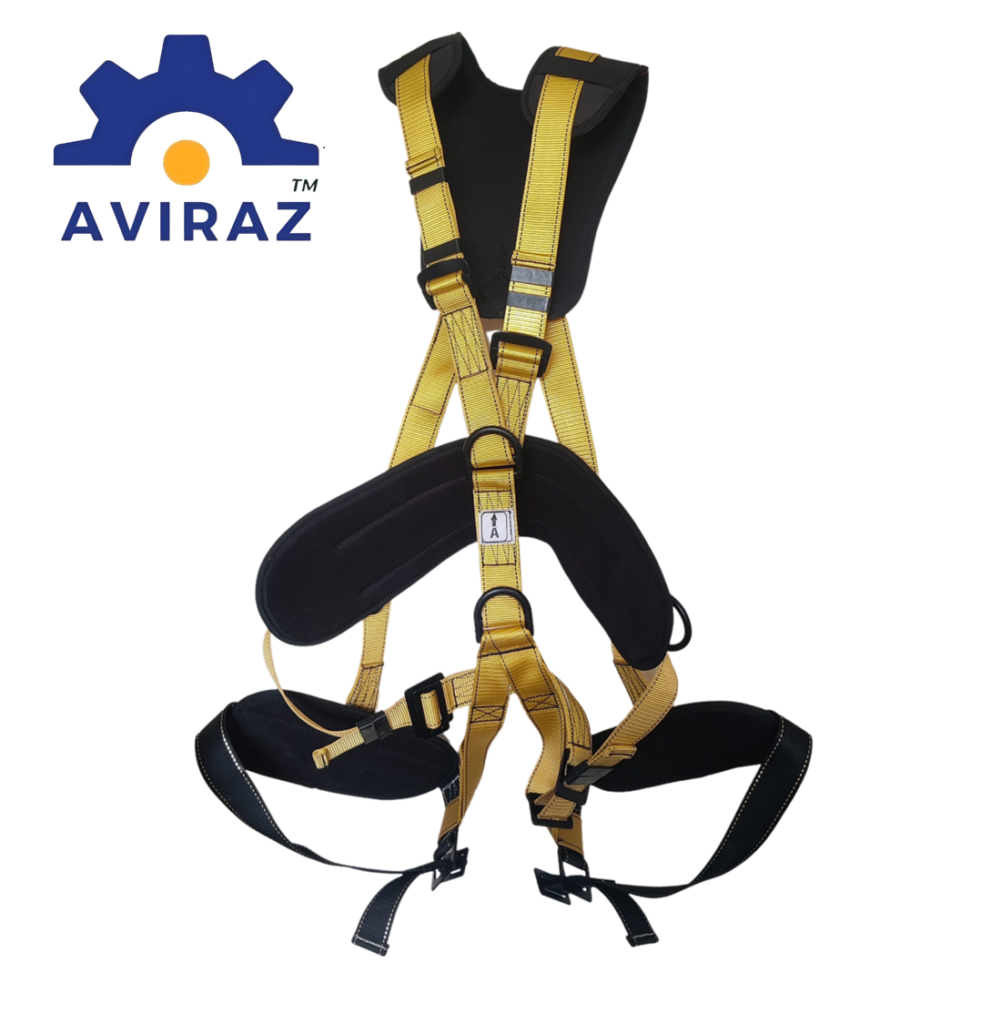Safety Harness: A Critical Tool for Workplace Safety
In industries like construction and tree care, proper use of a safety harness is vital for preventing falls and protecting lives. A safety harness secures workers to a structure, distributing fall forces to minimize injury. However, correct usage is key to effectiveness. In this post, we’ll explore the purpose, components, and 6 essential steps to using a safety harness safely. Ensure you’re using this life-saving equipment properly to maximize protection.

What is a Safety Harness?
A safety harness is a vital piece of equipment designed to protect individuals working at height by preventing falls. It connects the worker to a secure anchor point—like a scaffold or beam—allowing safe movement without the risk of falling.
To ensure maximum protection, a properly fitted harness is essential. The harness should be snug, with all straps securely fastened, and connected to a reliable anchor. Whether it’s a fixed structure or a dynamic anchor like a co-worker providing belay support, proper attachment is crucial.
While wearing a safety harness, always remain aware of height-related risks. Falls are the leading cause of fatalities in construction, so stay vigilant and avoid unnecessary risks. If in doubt, consult a qualified supervisor for guidance.
6 Essential Steps to Properly Use a Safety Harness
Using a safety harness correctly is critical for personal fall protection. Improper use can lead to serious injuries or fatalities, especially in construction. Follow these six steps to ensure your harness is worn and maintained for maximum safety:

- 1.Straighten Your Safety Harness
Hold the harness by the D-ring and shake it out to untangle and arrange the straps. - 2.Inspect the Safety Harness
Before wearing, unbuckle chest, leg, and waist straps to thoroughly inspect for frayed straps or damaged buckles. Never use a damaged harness. - 3.Wear the Harness
Slip the shoulder straps over your shoulders, ensuring the D-ring is centered between your shoulder blades for proper fall protection. - 4.Fasten and Adjust the Leg Straps
Secure the leg straps using the appropriate buckle (tongue, parachute, pass-through, or quick-connect) and adjust for a snug, comfortable fit. Fasten the waist strap if available. - 5.Fasten and Adjust the Chest Strap
Buckle the chest strap across the middle of your chest, ensuring it holds the harness in place, even in the event of a head-first fall. - 6.Confirm Proper Fit
Make sure the harness is snug but allows movement. Tuck excess straps to avoid catching on equipment or materials.
By following these steps, you can ensure your safety harness is used effectively, reducing the risk of fall-related accidents.
Conclusion: The Importance of Using a Safety Harness Correctly

A safety harness is essential for anyone working at heights, providing critical protection against falls, serious injuries, or fatalities. However, simply having a harness isn’t enough—it’s crucial to know how to use it properly, inspect it for damage, and ensure a correct fit. By following the six essential steps outlined in this guide, you’ll be better prepared to use your safety harness effectively and safely. Remember, workplace safety is not just about having the right equipment but about understanding how to apply it correctly. Stay informed, stay vigilant, and always prioritize safety at work.
